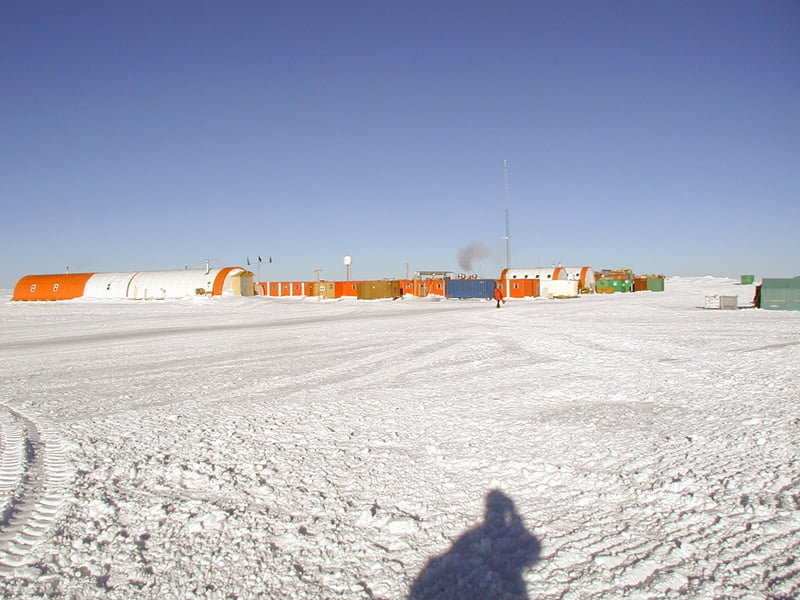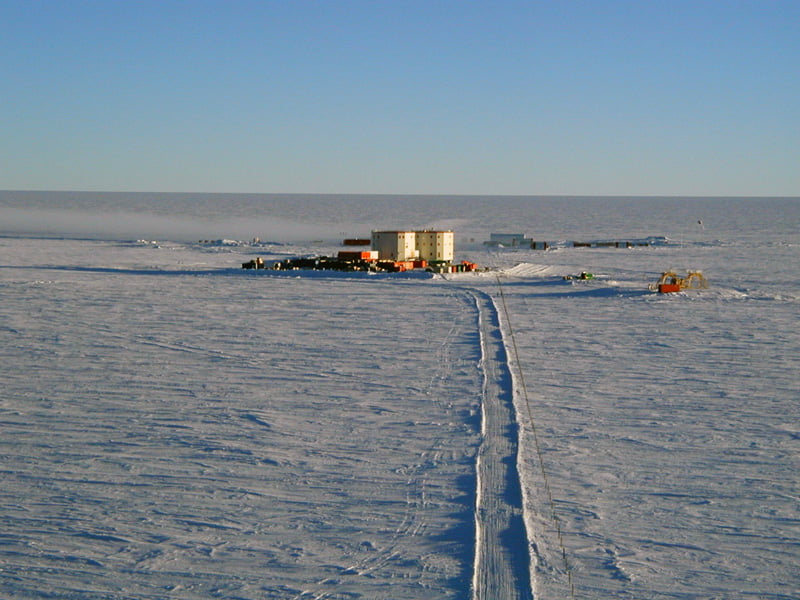Located at the geographic South Pole, the Antarctic Station Concordia is one of the most remote and inhospitable places on Earth. Concordia Station is a permanent research station located on the Antarctic Plateau, jointly operated by French and Italian scientists.
It is the third permanent research station on the Antarctic Plateau, after Vostok Station and Amundsen-Scott Station at the South Pole.
Housing a small community of scientists and support staff, the station provides a unique platform for the study of Earth’s atmosphere, climate and space environment. Let’s go to explore the lives of the people working at the Antarctic Concordia Station, the scientific experiments they conduct, and the challenges they face in this hostile environment.
Life at the Antarctic Station Concordia
The Antarctic Station Concordia is a facility jointly operated by France and Italy, with a maximum capacity of 80 people during the summer season (November to February) and 15 during the winter season (May to August).
The resort is located at an altitude of 3,233 meters (10,607 feet) above sea level, making it one of the highest and driest places on Earth. The nearest city, Dome C, is more than 1,200 kilometers (750 miles) away, and the next human settlement, the Amundsen-Scott Station at the South Pole, is about 1,670 kilometers (1,040 miles) away.
The isolation and harsh climate of the Antarctic Concordia Station create a unique living and working environment. During the winter season, the sun does not rise above the horizon for four months and the temperature can drop to -80 degrees Celsius (-112 degrees Fahrenheit).
The station is also located in a polar desert, which means there is very little precipitation and the air is extremely dry, causing chapped lips and irritated eyes among the crew. As a result, living conditions on the station are difficult, with limited resources and facilities.
To cope with these challenges, Antarctic Station Concordia personnel must be physically and mentally resilient. Isolation also poses a significant challenge, as the closest humans are located 600 km away at the Russian Vostok base.
What life is like on Concordia Station
The Concordia Station crew is also in a situation of permanent darkness during the winter and permanent daylight during the summer. They must also be able to work as a team and adapt to changing conditions.
The station offers a range of recreational activities, such as a gym, sauna, and movie theater, to help staff relax and socialize during their free time.
Crew members are carefully selected for their ability to cope with isolation and work well in groups. They are encouraged to set personal and professional goals to achieve throughout the year to stay motivated. They are also encouraged to communicate regularly with their families and friends back home.
Members of the small community also participate in regular team-building activities and social events to keep morale high. Many of them are also invited to participate in scientific research projects to keep their minds busy and engaged.
The Station’s doctor takes care of the physical and mental health of the crew.
The station is equipped with Internet access, and crew members can use e-mail and video conferencing to communicate with their loved ones.
Concordia Station personnel have access to a variety of communication methods.
The station uses a VHF radio system to communicate with individuals, and the station doctor also has a satellite phone for emergencies.

Scientific experiments at the Antarctic Concordia Station
Despite its remote location and hostile environment, the Antarctic Concordia Station is an ideal place to conduct scientific experiments. The station’s high altitude and dry air create a stable and clear atmosphere, making it an excellent site for stargazing and studying Earth’s atmosphere. The station is also located near the South Pole, which provides a unique vantage point for observing Earth’s magnetic field and space environment.
Concordia Station is also an isolation site and has been used to test the effects of hostile environments on humans.
The site is also used for glaciological research, as it is a particularly attractive environment for deep drilling that could trace the last 500,000 years of climate history.
In addition, the station has been identified as a suitable place for extremely accurate astronomical observations due to the transparency of the Antarctic atmosphere.
Research activities
Research activities at the Antarctic Concordia Station are diverse and interdisciplinary. They include:
- Climate research: The station is part of the global network of climate monitoring stations, and its data are used to study Earth’s climate and predict future changes. The station also conducts research on the Antarctic ice sheet and its contribution to sea level rise.
- Astronomy: The station houses several telescopes and observatories, used to study cosmic radiation,the sun and stars. The station’s clear and stable atmosphere provides a unique opportunity to observe the universe.
- Space physics: The station is located near the South Pole, an ideal location for observing Earth’s magnetosphere and studying the interaction between the solar wind and Earth’s atmosphere.
- Human physiology: The station’s isolation and extreme environment provide a unique platform to study the effects of long-term isolation, confinement and extreme environments on human physiology and psychology.
The challenges of conducting research at the Antarctic Concordia Station are significant. The extreme environment and limited resources make it difficult to maintain equipment and conduct experiments. The isolation and small community also create logistical problems for transporting and storing samples and data. Nevertheless, the scientific discoveries and insights gained from this research are invaluable to our understanding of our planet and the universe.
The Antarctic Station Concordia is a unique and challenging place to live and work. The isolation, hostile environment, and limited resources create a demanding environment for the staff and scientists who call it home. However, the station also provides a unique platform for conducting groundbreaking research in fields such as climate science, astronomy, space physics, and human physiology.
The discoveries and insights gained from this research are essential for understanding our planet and our place in the universe. As humanity continues to face global challenges such as climate change and space exploration, the work being done at the Antarctic Station Concordia will be increasingly important for shaping our future.

